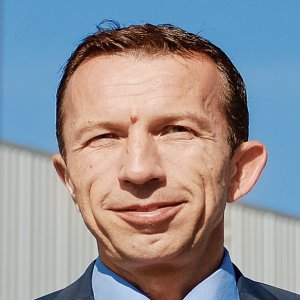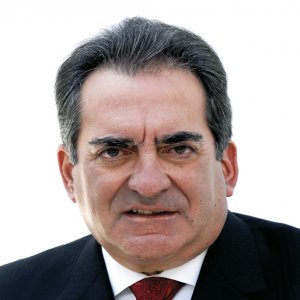True Mobility Means More than Just Buses

Q: How will Scania balance an increase in operations with maintaining a healthy customer service strategy?
A: In a growing Mexican market, the best opportunity lies in maintenance operations either directly with the dealer, with private service shops or within the clients’ own transport operations. Our strategy has focused on approaching clients and offering to perform maintenance on their trucks and buses. There has been encouraging growth in sales but growth in service operations has been overwhelming. Scania has always been oriented to the coach segment, but we are beginning to implement new marketing programs for our urban bus and truck division. We spent several years struggling to sell trucks but in 2016 sales recovered and we plan to reach 500 units in several truck fleets by the end of 2017. This is still a small share for a market of this size but it will boost our presence here.
We are including our Scania Communicator system in all our maintenance policies. This solution has improved our management, time frames and availability. We are working with the federal and Mexico City's Ministries of the Environment (Sedema and Semarnat) to promote the advantages of our natural gas units so that clients are aware of an environmentally friendly and cost-competitive alternative to normal diesel units.
Q: How are you locating the talent Scania needs to continue growing in the market?
A: Of our 116 current vacancies, 40 percent are trainee positions. We try to hire young people, mostly recent graduates and train them in line with Scania’s culture. We have arrangements with several universities, including CEDVA, the Autonomous University of Nuevo Leon, the Autonomous University of Chiapas and many others throughout the country. We even transfer people from regions where we do not have service operations, like Guerrero, to other locations where they can learn about the company. All new recruits must spend a week in our corporate offices in the city of Queretaro, where they receive intensive training courses on technical capabilities and Scania’s values. This is also the perfect opportunity for them to meet our directors, nurturing a more personal connection with the company.
Q: How have you countered the challenges of staff turnover within the automotive industry?
A: High staff turnover has been one of the main challenges Scania and the automotive industry have faced but our human resources strategy has been pivotal in turning this around. We also have developed an inclusion program to strengthen the bond with new employees, and our workshop leaders have benefited from a training program that has shown incredible results.
During the first six months of employment our Human Resources team is in touch with all new recruits, finding out what they need and how Scania can make their transition easier. This helps us attack the small problems and uncertainties that can impact loyalty. We can monitor more closely the evolution of our different service points to be sure they align with corporate expectations. Communication has become one of our core values, leading us to organize team-building activities like our monthly lunches with all the service points in the region.
Q: How can universities improve their curriculum to address the industry’s needs more efficiently?
A: There needs to be a stronger relationship between industry and academia. Most technicians focus on gasoline engines but there is a considerable deficit in diesel-oriented professionals. That is why certain institutions like CEDVA have asked us to give some of their lectures. Sometimes universities create a certain degree program but neglect to include the technical side, so the industry’s input is crucial to develop better education plans.
Q: How is Scania planning to maintain its leading position in the market?
A: We are planning to open three more service centers in Veracruz, Hermosillo and Culiacan in 2016. The idea is to integrate the right people as quickly as possible. All recruits are hired months before starting any new operation and trained in one of our service facilities.
Changes in the exchange rate have created a complicated situation for the company, especially regarding auto-part sourcing. Our strong service-oriented approach and the development of qualified human capital helped us mitigate any negative effects. We are likely to be vulnerable to these fluctuations but we are working to offer clients the best solutions. Scania forecast a 35 percent increase in service operations between 2015 and 2016 and more than 25 percent growth in our total sales.
Q: What opportunities exist to merge automotive technological development with sustainable infrastructure development?
A: Accessibility should be one of the highest priorities for urban transportation. Low-entry buses offer swifter boarding, which translates to less idle time for the bus and for any vehicle waiting behind it. We are also lobbying for pneumatic suspensions since there is no clear agenda on this matter. These systems offer an improved passenger experience and make the driver, who may spend 8-10 hours in the unit, more comfortable. Roads should be better maintained but the implementation of pneumatic suspension regulations would go a long way to preventing constant repairs.
Integral public transportation strategies must help improve environmental conditions and the life quality of the general population. A good transportation network contributes to democratizing all growth opportunities. To date, the vehicle park includes outdated and undersized units following inefficient routes without restricted lanes. Prioritizing urban transportation over private vehicles should be standard in every city. Technological integration is also essential to improve the urban landscape and natural gas units are superior in terms of efficiency and emissions.
Q: What would naturally be Mexico’s next step to improve its environmental and traffic situation?
A: Most major cities in the country are already worrying about improving their mobility plans and there are now various BRT lines in different locations. However, only 10 percent of people using public transportation use BRT systems. Modernization is inevitable but it requires congruency between government strategies to incentivize the use of public transportation and the infrastructure development to support these measures.






















